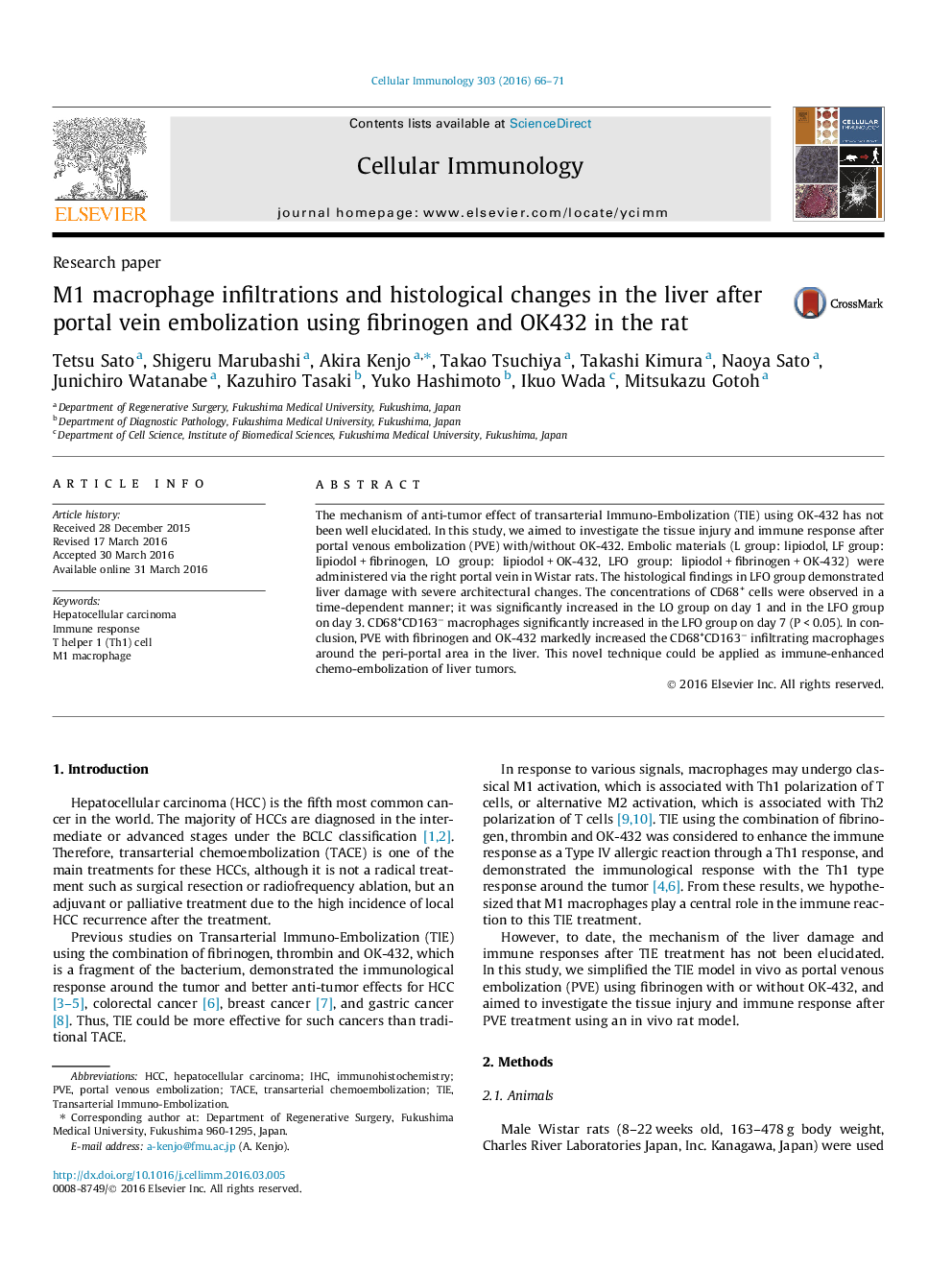| Article ID | Journal | Published Year | Pages | File Type |
|---|---|---|---|---|
| 8463707 | Cellular Immunology | 2016 | 6 Pages |
Abstract
The mechanism of anti-tumor effect of transarterial Immuno-Embolization (TIE) using OK-432 has not been well elucidated. In this study, we aimed to investigate the tissue injury and immune response after portal venous embolization (PVE) with/without OK-432. Embolic materials (L group: lipiodol, LF group: lipiodol + fibrinogen, LO group: lipiodol + OK-432, LFO group: lipiodol + fibrinogen + OK-432) were administered via the right portal vein in Wistar rats. The histological findings in LFO group demonstrated liver damage with severe architectural changes. The concentrations of CD68+ cells were observed in a time-dependent manner; it was significantly increased in the LO group on day 1 and in the LFO group on day 3. CD68+CD163â macrophages significantly increased in the LFO group on day 7 (P < 0.05). In conclusion, PVE with fibrinogen and OK-432 markedly increased the CD68+CD163â infiltrating macrophages around the peri-portal area in the liver. This novel technique could be applied as immune-enhanced chemo-embolization of liver tumors.
Keywords
Related Topics
Life Sciences
Biochemistry, Genetics and Molecular Biology
Cell Biology
Authors
Tetsu Sato, Shigeru Marubashi, Akira Kenjo, Takao Tsuchiya, Takashi Kimura, Naoya Sato, Junichiro Watanabe, Kazuhiro Tasaki, Yuko Hashimoto, Ikuo Wada, Mitsukazu Gotoh,
